
|
Arthur W Toga is a Professor of Neurology at the University of California, Los Angeles (UCLA), Associate Director of the UCLA Brain Mapping Division within the Neuropsychiatric Institute and Associate Dean at the Geffen School of Medicine at UCLA. He also directs the UCLA's Laboratory of Neuroimaging, a 120-member laboratory that includes graduate students from computer science, biostatistics and neuroscience. Professor Toga's research is focused on neuroimaging, mapping brain structure and function and brain atlasing. He also studies cerebral metabolism and neurovascular coupling. He has written more than 700 papers, chapters and abstracts, including eight books, is the founding Editor in Chief of NeuroImage and has received numerous awards and honours in neuroscience, computer science and graphics. He trained in neuroscience and computer science. More |
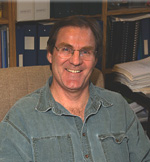
|
Alan Evans heads the data coordinating center for two large NIH-funded multi-center MRI study of normal pediatric development and research of Aurism in infants. These projects provide a web-accessible reference database of normal and autistic maturation, both neuroanatomical and behavioral, for studies of normal and abnormal brain development. The methodologies developed for those projects, most notably (i) the web-based imaging/behavioral database, (ii) the automated MRI segmentation pipeline, and (iii) the brain-behavior correlation analysis for voxel-based (volumetric) or vertex-based (surface) data, are being used in a series of international collaborations on abnormal pediatric development and Alzheimer's disease. More |

|
Zhiming Zhang's current research focuses on utilizing magnetic resonance imaging (MRI) and functional MRI technologies to study aging and degenerative disease in awake non-human primate model. Brain activation induced by pharmacological stimulation is mapped by using endogenous blood oxygenation level dependent (BOLD) mechanism to study functional architecture of basal ganglia circuits. The study will let us better understand the anatomy, physiology and pharmacology of those structures. Another research interest is using the non-human primate parkinsonian model to investigate the basal ganglia pathways which involve Levo-dopa induced side effects. This study can lead us to find a better strategy to treat Parkinson's disease. More |

|
Guoying Bing's laboratory has recently found that a high level of microsomal epoxide hydrolase (mEH) expression in the brain of patients with Alzheimer's disease as well as the rat brain following exposure to neurodegenerative agents such as kainic acid and trimethyl-tin. Relatively little is known about the expression and function of mEH in the CNS. However, the dual function of mEH in the activation as well as the inactivation of various reactive compounds from xenobiotic metabolites has important implications regarding its role in brain toxicity. The hypothesize is that mEH plays a crucial role in the biotransformation of endogenous xenobiotics and/or environmental chemicals into more toxic metabolites which may cause neuronal degeneration in specific neuronal populations. The identifying the exact role of mEH as well as the role of xenobiotic metabolites in the brain will be critical in understanding the neurodegeneration induced by exposure to toxic chemicals. More |
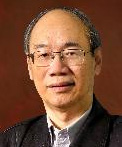
|
姚大卫教授致力于人类及动物中枢神经系统的发育及老化机理研究和动物视觉系统的比较及实验病理研究。80年代提出低能量激光对生物系统作用假说,并在动物视觉系统上加以认证。该理论现已广泛的应用于疾病治疗,并成为现代康复医学的重要理论基础。90年代首先提出人类中枢神经系统老化及细胞死亡规律,并指出了NO及额叶在老化中的作用。 More |
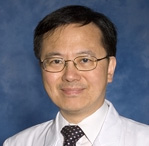
|
POON Wai Sang(潘偉生)'s clinical interests include pituitary surgery and surgical management of Parkinson's disease, epilepsy surgery and the spinal cord; research interests include clinical and experimental head injury, hyponatraemia, telemedicine, neurorehabilitation, neuro-oncology and cell therapy for intracerebral haemorrhage. More |
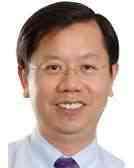
|
Heng Pheng-Ann(王平安)'s research interests include virtual reality applications in medicine, visualization, medical imaging, human-computer interaction, and computer graphics. More |
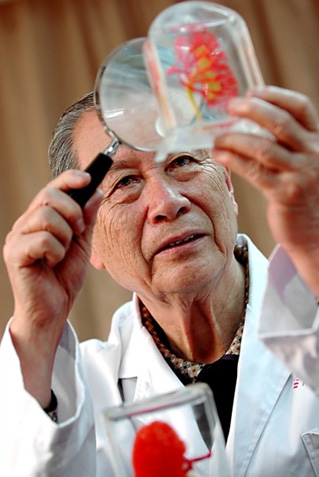
|
钟世镇,中国工程院院士,1925年出生,广东五华人,1952年毕业于中山大学医学院.从事大体解剖学专业,师从叶鹿鸣、何光篪教授.担任过中国解剖学会副理事长和名誉理事长,现任南方医科大学临床解剖学研究所名誉所长、全军和广东省医学生物力学重点实验室主任.是我国临床解剖学的奠基人和.中国数字人和数字医学研究"的倡导者,1997年当选为中国工程院院士.以第一作者发表了160多篇论文,曾获国家科技进步二等奖6项、全国优秀科普一等奖、广东省科技突出贡献奖、"何梁何利基金"科技进步奖、"柯麟医学奖"、省部级科技一等奖3项、全军优秀教材一等奖.他获"全国优秀教师"、"全国高校先进科技工作者"、"全军科技先进个人"、总后勤部"科技一代名师"、"全军优秀共产党员"荣誉称号. More |
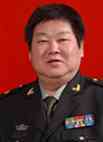
|
李云庆,1961年生,获第四军医大学和日本国京都大学博士学位,第四军医大学教授、博士生导师,教育部"长江学者"特聘教授,国家重点学科人体解剖学教研室主任,兼任国务院学位委员会学科评议组成员、中国解剖学会理事长兼神经解剖学专业委员会主任委员、全军解剖组胚专业委员会主任委员、《神经解剖学杂志》主编等职。科研工作集中在痛信息传递和调控机理,先后承担"973"、"863"、国家自然科学基金重点项目、国家自然科学杰出青年基金、国家自然科学基金面上项目、军队医药卫生科研基金等研究课题,证实了"下行抑制系统"的主要起源和终止部位及其神经递质种类,系统地完成了"中脑边缘镇痛环路"的形态学证实。在痛信息传递和调控有关的局部微环路及其神经递质和受体、大脑运动皮质对脑干面口部运动核的间接支配的形态学研究方面,取得了突出成绩。发表论文162篇,其中SCI论文88篇,被他人引用近千次。主编、副主编、参编专著10部。获国家科技进步一等奖1项、省部级科技进步一等奖3项、二等奖5项。 More |
|
|

|
张绍祥,医学博士,少将军衔,现任第三军医大学副校长、人体解剖学教授、博士生导师、重庆市数字医学研究所所长。国家杰出青年基金获得者,总后科技银星。兼任中国解剖学会副理事长、人体解剖学专业委员会主任委员,中华医学会数字医学分会主任委员,重庆市解剖学会理事长、美国Clinical Anatomy杂志编委,《局解与手术学杂志》主编。长期从事断层影像解剖学和数字医学研究,在国内外发表学术论文140余篇,其中国外SCI收录期刊发表论文16篇,主编出版了我国高等教育面向21世纪教学内容和课程体系改革计划白皮书《医学基础类课程教学改革研究报告》,主编了《中国数字化可视人体图谱》、《人体颅底部薄层断面与MRI、CT对照图谱》等学术专著,参编专著16部。研究成果先后获国家科技进步二等奖2项,军队(省部级)科技奖励11项。 More |
|
|
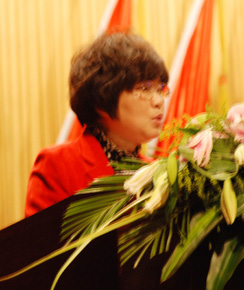
|
韩卉,女,1958年2月生,硕士,中国民主同盟盟员。1976年1月下放安徽省无为县徐岗公社,1978年考入安徽医学院医疗系临床医学专业,1982年7月毕业,留校任教。1998年12月晋升为教授,1999年起享受安徽省政府特殊津贴。长期从事人体解剖学教学及心血管、颅脑等临床应用解剖学研究,讲授系统解剖学、局部解剖学及断层解剖学等课程。现任安徽医科大学人体解剖学教研室主任、基础医学院副院长、人体解剖与组织胚胎学学科带头人、安徽省省级重点课程及精品课程负责人、安徽省形态学实验教学示范中心主任、安徽省跨世纪学术和技术带头人。 More |